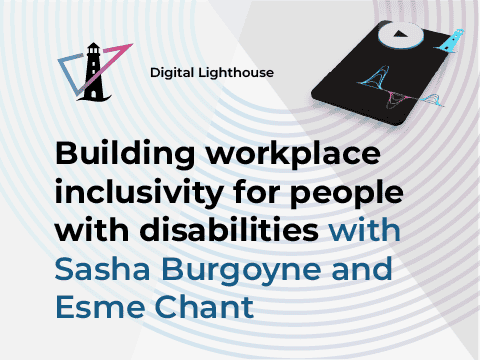
When you join an organisation as CTO, your first task, when it comes to your technology teams, will generally be to get them on-side. You’ll then want to spend time understanding the teams’ strengths and weaknesses, and addressing any pressing issues, such as key-person dependency risk, or immediate skills shortages. We cover all of these areas in the first part of this series.
Next, it’s time to begin moulding your function into one that will align with the working practices and technologies you looking to implement.
Build your teams’ sense of engagement
It’s starts by building a sense of engagement and ownership. Creating teams that are genuinely engaged with what they’re doing, and that buy into the organisation’s strategic vision, can be immensely powerful. Teams that feel part of something they truly believe in are typically more motivated, productive and loyal. This makes it easier for you to produce high-quality results, minimise churn and attract the best talent.
Show your teams how their work benefits the organisation, your customers, and their customers
This is another powerful way to get technology teams to support the organisation’s wider goals. How much revenue has their product generated for the business? How many citizens have benefited from the digital public service they support? How many lives has your healthcare product saved?
Empower your teams to improve the way they work
Giving your teams a sense of ownership and ability to influence how they do their jobs is a further way to build engagement. Encourage them to constructively challenge how things are done.
Strategically address bottlenecks and single points of failure
One of your priorities when you became CTO will have been to address the critical key-person dependency risks in your technology function. In the short term, these may have been tactical fixes. Longer-term, there might be more permanent measures you need to implement, ultimately making your organisation more resilient and responsive.
Further refine your processes
Assess how effective any tactical process adjustments have been. If there are still issues, refine your processes further, to smooth out any sticking points.
Build a culture of knowledge-democratisation
The more critical a skill or piece of knowledge is to your organisation’s ability to operate, the more widely it must be shared. Beyond the tactical measures you may have implemented to do this in the short term, you now need to start building a culture where knowledge gets shared as a matter of course. Ultimately, you want to get to a point where no part of your operation is reliant on a very small number of individuals.
Evolve your skills base to deliver your vision
The team insights you’ll have collected during your early days in-post, coupled with your longer-term vision for the technology function, will help you plan where you require additional skills and/or capacity.
Map out your medium- and long-term skills needs
Review the outcomes from the skills assessment we described in the first article in this series. As you flesh out your longer-term technology vision and roadmap, how does the staffing picture change? Do you still require the same capabilities? Are there additional skills you’ll need access to?
Upskill, recruit or partner?
Getting in place the skills you need in the long term is likely to involve a blend of upskilling, recruitment and partnering. Which you choose will depend on a variety of factors, including the quantity of each capability you require, its criticality, and the cost of accessing and maintaining it in-house compared to outsourcing.
This will likely evolve over time: something you initially outsource could later make more sense to bring in-house, and vice-versa. Keep your skills base under review to ensure it always aligns with business requirements.
Make use of external support
It can sometimes be challenging to find the resources you need to innovate and test new ideas internally, while maintaining focus on your core activities. Rather than disrupt your in-house teams’ velocities or de-prioritise innovation, consider using external organisations. This can be a fast and cost-effective alternative for part, or all, of the innovation cycle. It leaves your in-house teams free to focus on business-as-usual, until such time as you want them to take over.
For example, you could use an external partner to validate the technical feasibility of a new product, before your teams design and develop it. Or you could use the partner for the full innovation cycle, designing and developing the production-ready product, which your teams then take on once it becomes part of business-as-usual.
Continue the evolution
Organisational needs will always be evolving, in response to changing customer demands, as well as market, legislative and regulatory conditions. In every modern organisation, the technology function will need to play a critical role in enabling it to meet these changing aims effectively and responsively.
This process we’ve described to review and evolve the makeup of your technology teams should therefore also be a continual one. Keeping this under periodic review will ensure you’re equipped to nimbly respond in support of your organisation’s ever-changing goals.


